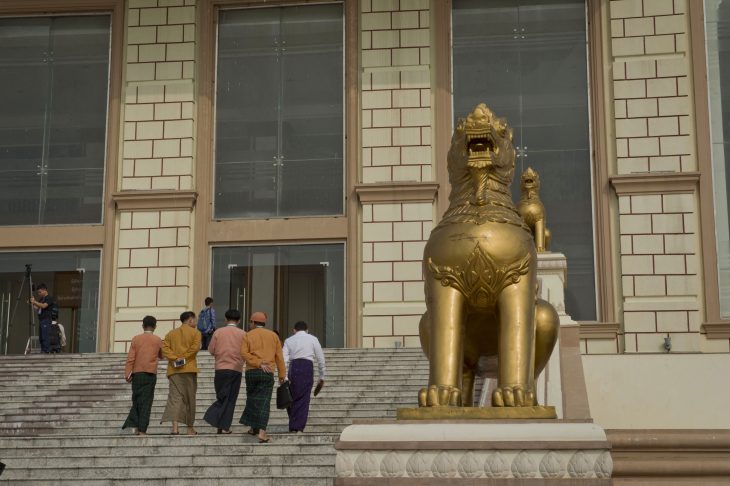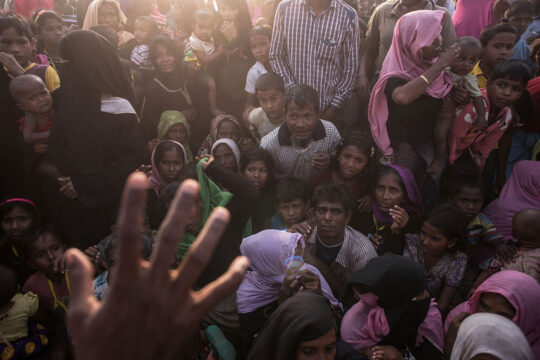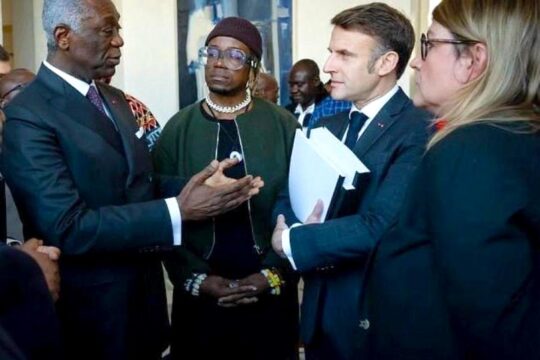To many, the overwhelming election victory in November 2015 for Aung San Suu Kyi’s National League for Democracy (‘NLD’) has increased the space in Myanmar for both transitional justice and legal sector reform. Yet the transitional justice mechanisms ultimately implemented to deal with how the country comes to terms with the legacy of past state violence and repression, and the sustainability of broader justice reforms, will be dependent on the new government overcoming long-standing political, popular and practical challenges. Keeping the country united when the future role of the military is still uncertain – and in the face of rising democratic, federalist and economic aspirations – requires compromises that almost inevitably will undercut both transitional justice and legal sector reforms.
THE HISTORICAL CONTEXT
For nearly fifty years Myanmar was known as one of the most repressive regimes in the world. The junta’s justice system was a tool of oppression, a dysfunctional mix of cryogenically suspended British colonial-era legislation, military-controlled and -degraded institutions, riddled with corruption and operating without any degree of professional competence, independence or integrity.
However, in 2011 the generals embarked on a process of liberalisation while in a position of strength. The nominally civilian government led by President Thein Sein (himself a former military general) began implementing measures that led to the lifting of international sanctions and the opening of the country to foreign investment and tourism, and even the justice sector began to modernise.
Given Myanmar’s history there was understandable nervousness about the motives of the military and whether the country was really in transition to democracy at all. In 2012, International Crisis Group assessed the government’s overall reforms as genuine, but as the election loomed there was U.S. criticism that the reforms were stalling. Nevertheless, the on going justice sector initiatives have continued up to the 2015 elections and beyond.
In the 2015 election, the National League for Democracy (‘NLD’) won 80% of the votes cast, their second landslide result in 25 years. Unlike in 1990, this result appears to be accepted by the military. It is difficult to see this as anything less than an important critical juncture in Myanmar’s transition, but it is clear that even in this early post-election stage the new government is not looking to implement any classical transitional justice mechanisms. Quashing ideas of wholesale retributive justice, Aung San Suu Kyi said in an interview in November 2015 ‘We are not going in for vengeance or a series of Nurembergs.’ Similarly, despite pre-election calls for a South Africa-style truth commission from a UN envoy and from some human rights groups, this does not appear to be likely.
Instead, gradual institutional change and a re-drawing of the major state apparatus appears to be the way the NLD is attempting to hasten the transition to democracy. As Aung San Suu Kyi put it in the November 2015 interview, ‘People must change their ways. It doesn’t mean we’ll let people get away with what they’ve been doing for 50 years.’ This rather suggests that reform of the justice sector will be key – in itself an important goal, but more instrumentally often a precursor or accompaniment to wider transitional justice aims of establishing the rule of law.
JUSTICE REFORM INITIATIVES IN CONTEXT
The list of recent and continuing justice sector reform projects may be disparate and uncoordinated, but it is impressive all the same. It includes the formation in January 2016 of the very first Independent Lawyers Association of Myanmar, with the assistance of the International Bar Association’s Human Rights Institute; the upgrading of tertiary teaching through a university clinical legal education project run by a regional NGO; the launch after a successful pilot of the Rule of Law Centre Project backed by the United Nations Development Programme (‘UNDP’) and other international partners; the symbolically important, if practically flawed, Legal Aid Law, passed as one of President Thein Sein’s last acts before the old Parliament was dissolved; the discussions at the Office of the Supreme Court (‘OSCU’) with UNDP and the International Commission of Jurists for the development of a new code of judicial ethics; a pilot scheme being run in four court centres to trial a new case management system to professionalise and modernise courtrooms and access to information; and the many dozens of grassroots projects ranging from the training of paralegals, access to justice for the poor and marginalised, and environmental activist initiatives.
The stated overall objective of these reforms has been to establish the rule of law, the nature of which is concerned both with a prohibition on the arbitrary exercise of power and with the creation of a rights-compliant system. However, use of the term ‘rule of law’ in Myanmar has not always corresponded with this accepted definition. As Cheesman and others explain, the military regime consistently misused the expression, conflating it with ‘law and order’ to justify heavy-handed treatment of public demonstrations, repression of political opponents, and arbitrary arrest, torture and extra-judicial killings. This perverted understanding of the rule of law has meant that the law has traditionally been used (and seen) as a tool of social control.
In parallel to this, Aung San Suu Kyi has long campaigned for respect for the rule of law, and in 2012 she was appointed as chairman of the newly created Parliamentary Rule of Law and Tranquillity Committee, the stated object of which was to promote the rule of law, although it never had the wholehearted support of the previous government.
Given these contradictory definitions of the rule of law, it is not surprising that the majority of the population has not found comfort in the concept. Rather, there is widespread popular distrust of the justice sector, particularly as institutional corruption still persists. As one commentator has discussed, it is difficult for the people to see law as a force for change when for the last 50 years it has been experienced as an instrument of oppression and control.
The new government cannot engineer an overnight cultural change in the behaviour of justice sector officials any more than it can hope to rapidly shift the opinion of the entire population through community forums and workshops. Attitudes can only be changed through the lived experience of the law. This includes, from the author’s own experiences of development law projects, stimulating discussions between different justice stakeholders, which can contribute to greater understanding of the institution of law and the mutual ‘humanising’ of justice users and justice providers.
Nevertheless, laudable as the justice reforms are, they may not be enough to secure the rule of law – nor to act as an appropriate catalyst for wider post-authoritarian justice – given the many challenges facing Myanmar’s transition.
CHALLENGES OF IMPLEMENTATION
The current political, socio-economic and legal realities make for a particularly complex transitional environment in Myanmar. Corruption, cronyism, abuse of human rights and heavy-handed police treatment persists. There is an uneasy ceasefire in unresolved military conflicts with well-organised non-state armed groups within Myanmar’s border. Inter-communal violence and religious intolerance continues, particularly in relation to Rohingya Muslims in Rakhine state, as allegations from 2013 of crimes against humanity go unanswered. The first underlying challenge to the realisation of any systematic reform of the justice sector is the continuing strength of the military. Even after their overwhelming electoral defeat, they retain considerable de facto political power, and the defects of the current Constitution are well documented. Ultimate civilian control over the country is impossible without reform. Until then, there is always a risk that the military can block NLD reforms it doesn’t like – or worse, take back power.
Secondly, Myanmar does not have a ministry of justice, and there is no single institution guiding overall justice policy in the country. Since 2012, the offices of the Attorney-General (UAGO) and the OSCU have independently been involved in separate reform initiatives. Through the auspices of international development agencies, both UAGO and OSCU have invited scores of foreign justice consultants to deliver training, assist with strategic planning and help with legislative drafting. At one level, the cultural shift that has occurred within these institutions in recent years is remarkable. Yet these disparate rule of capacity building initiatives are unlikely to bring about systemic justice reforms without real institutional commitment and a clearly articulated theory of change, as many in the field of law and development recognise is now required in developing countries.
Finally, the new government must overcome ingrained economic inequalities. Myanmar, 148th out of 173 on the UN’s Human Development Index 2015, is a country of nearly 60 million people, over 65% of whom live in the countryside where there is limited basic infrastructure let alone functioning, modern well-equipped courts. This stands in stark contrast to the country’s significant natural resources, the vast wealth generated from which remains in the hands of the kleptocratic ruling elite and their corporate cronies, who have been at the heart of Myanmar’s political economy for decades, and who (as other scholars have identified) will be difficult to dislodge.
CONCLUSION
As the International Center for Transitional Justice (‘ICTJ’) stated in a 2014 report, the current transition to democracy provides an opportunity for the authorities to realign the relationship between the state and its citizens. In Myanmar, repairing the justice system would go a long way to improving this relationship. However, whilst there has been no shortage of ideas on what needs to be changed, currently lacking is a consideration of an overall strategy for when and how the reforms can be implemented. Myanmar requires an overarching justice strategy for the next 25 years or more, a sector-wide approach that coordinates the disparate initiatives, and the appropriate budgetary resources. Realistically, structural and scalable changes will have to wait until the still-delicate transition enables both sides to move towards constitutional change.






